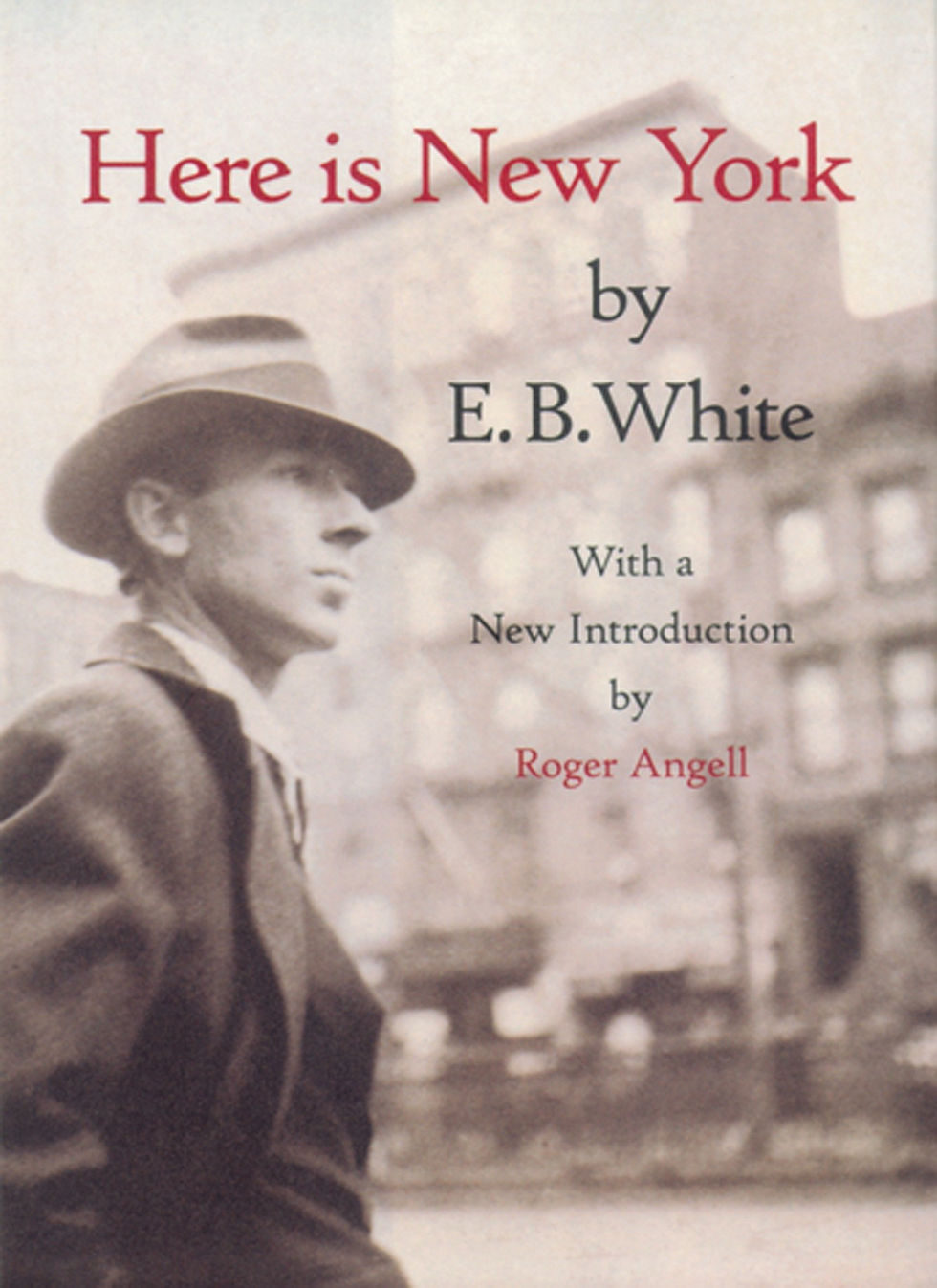Summary of "Here is New York"
- Wenjin Lu (Helen)
- Aug 7, 2020
- 3 min read
Updated: Oct 24, 2024
‘Here is New York’ talks about the errors that people think about what New York is.
E.B. White says says that many people believe New York is big and harsh, with no such things as friendship.
The author proves them wrong.
He gives examples about his neighborhood [of the author], like a grocery store, a barbershop, saloons, and more [many] others. These shops may all have a good owner that will help others when they can.
This book also states that people who live in New York cannot understand why tourists who come to New York pounce on the Statue of Liberty, the Central Park, and so on.
To New Yorkers, New York is not a forbidding place where individuals cannot communicate with each other friendly enough, but a comfortable home where people help others easily without the rules of status.
That is the reason why the author says at the beginning how people are wrong about New York in their eyes.
*******
Here is New York by E.B.White (1949)
The oft-quoted thumbnail sketch of New York is, of course: “It’s a wonderful place, but I’d hate to live there.” I have an idea that people from villages and small towns, people accustomed to the convenience and the friendliness of neighborhood over-the-fence living, are unaware that life in New York follows the neighborhood pattern.
The city is literally a composite of tens of thousands of tiny neighborhood units. There are, of course, the big districts and big units: Chelsea and Murry Hill and Gramercy (which are residential units), Harlem (a racial unit), Greenwich Village (a unit dedicated to the arts and other matters), and there is Radio City (a commercial development). . . and many other sections each of which has some distinguishing characteristic.
But the curious thing about New York is that each large geographical unit is composed of countless small neighborhoods. Each neighborhood is virtually self-sufficient. Usually it is not more than two or three blocks long and a couple of blocks wide. Each area is a city within a city within a city. Thus, no matter where you live in New York, you will find within a block or two a grocery store, a barbershop, a newsstand and shoeshine shack, a dry cleaner, a laundry, a delicatessen (deli) (beer and sandwiches delivered at any hour to your door), a flower shop, a movie house, a radio-repair shop, a stationer, a haberdasher, a tailor, a drugstore, a garage, a tearoom, a saloon, a hardware store, a liquor store, a shoe-repair shop.
Every block or two, in most residential sections of New York, is a little main street. A man starts for work in the morning and before he has gone two hundred yards he has completed half a dozen missions: bought a paper, left a pair of shoes to be soled, picked up a pack of cigarettes, ordered a bottle of whiskey to be dispatched in the opposite direction against his home-coming, and notified the dry cleaner that a pair of trousers awaits call.
Homeward bound eight hours later, he buys a bunch of pussy willow, a light bulb, a drink, a shine -- all between the corner where he steps off the bus and his apartment. So complete is each neighborhood, and so strong the sense of neighborhood, that many a New Yorker spends a lifetime within the confines of an area smaller than a country village. Let him walk two blocks from his corner and he is in a strange land and will feel uneasy till he gets back. (Pages 34-36)




Comments